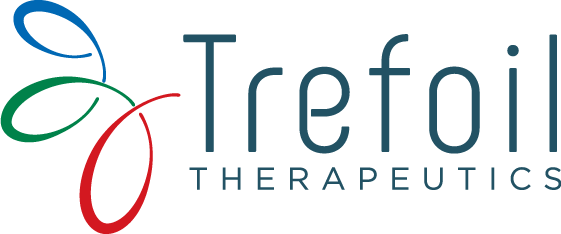
Trefoil Therapeutics Announces First Patient Dosed in Phase 1 Study of TTHX1114 for Treatment of Corneal Epithelial Defects
Topical formulation of TTHX1114 has potential to accelerate the healing of epithelial defects – a leading cause of blindness worldwide
SAN DIEGO–(BUSINESS WIRE)–Trefoil Therapeutics, a clinical-stage biotechnology company focused on restoring sight to people with corneal diseases, today announced the dosing of the first patient in its Phase 1 safety study evaluating TTHX1114 as a topical eye drop formulation designed to reduce the duration and impact of corneal epithelial defects. Corneal epithelial defects are open “sores” in the outer layer of the cornea that develop from common infections, eye trauma and neurotrophic keratopathy. These conditions can lead to blindness.
“We now have promising investigational candidates for both front and back of corneal conditions. We’re optimistic about what these medicines could mean for people with corneal diseases, and we’re eager to learn more through our research as TTHX1114 advances through the clinical pathway.”
“There is a clear unmet need for a topical therapy for corneal epithelial defects,” said Mark Mandel, M.D., a corneal and refractive surgery specialist and director of the corneal transplant program at California Pacific Medical Center in San Francisco. “Corneal epithelial defects can develop quickly from eye trauma, bacterial or viral infections such as a herpes reactivation, or from Sjögren’s syndrome, among many other causes. We need a convenient option that can prevent pain and potential vision loss.”
The Phase 1 study is designed to assess the safety and dosing profile of TTHX1114 in a topical eye drop formulation. The company has also completed a Phase 2 study of TTHX1114 as an intracameral injection for people with conditions that affect the back surface of the cornea, such as Fuchs Endothelial Corneal Dystrophy (FECD). Positive data from the STORM study were presented at the World Cornea Congress 2022.
“We are excited to take this important step to research TTHX1114 as a topical therapy,” said David Eveleth, Ph.D., President and CEO of Trefoil Therapeutics. “We now have promising investigational candidates for both front and back of corneal conditions. We’re optimistic about what these medicines could mean for people with corneal diseases, and we’re eager to learn more through our research as TTHX1114 advances through the clinical pathway.”
About TTHX1114
TTHX1114 is an investigational engineered variant of the naturally occurring molecule Fibroblast Growth Factor-1 (FGF1), which stimulates cell proliferation and migration as well as protecting cells from stress and injury. The topical formulation of TTHX1114 is designed to accelerate corneal ulcer wound healing by stimulating epithelial cell growth, potentially reducing common complications associated with corneal ulcers, such as pain, inflammation, and loss of vision due to corneal scarring. Trefoil also has a clinical program for TTHX1114 as an intracameral injection into the eye for patients with Fuchs Endothelial Corneal Dystrophy (FECD) and other corneal endothelial dystrophies (CED), aimed at protecting and regenerating corneal endothelial cells lost due to the disease and thereby improving vision.
About Corneal Ulcers
Corneal ulcers are open sores in the outer layer of the cornea caused by bacterial infections, viral infections like herpes, dry eyes, and other damage. Symptoms include severe pain and blurred vision, and potential vision loss; complications can include corneal scarring, development of glaucoma, and cataracts. The annual incidence of corneal ulcers in the United States is estimated as high as 75,000.1 Keratitis, the precursor to corneal ulceration, is responsible for approximately one million clinic and emergency department visits a year in the U.S.1 Corneal ulcers affect all groups but are more common in those who wear contact lenses.
Reactivation of common herpes viruses can impact eye health and cause oracular herpes (herpetic keratopathy), which produce corneal ulcers that blur vision and cause intense pain and inflammation. There are currently no treatments specifically for these ulcers. Corneal ulcers are also a common complication of Sjögren’s syndrome, which causes ophthalmologic manifestations like dry eye.2,3
About Trefoil Therapeutics
San Diego-based Trefoil Therapeutics is a clinical-stage biotechnology company focused on leveraging its engineered FGF1 protein technology platform to develop first-in-class pharmacologic treatments for serious corneal endothelial diseases and epithelial disorders. Trefoil’s lead product candidate is TTHX1114, an investigational engineered form of naturally occurring FGF1 designed to stimulate corneal cell protection, proliferation and migration, thereby reversing vision loss. The technology underlying Trefoil’s platform was developed by co-founders Michael Blaber, Ph.D., and David Eveleth, Ph.D., and is licensed from Florida State University. Trefoil investors include Bios Partners, Hatteras Venture Partners, Access Biotechnology, Solasta Ventures, InFocus Capital Partners, Correlation Ventures, and ExSight Ventures. Learn more at www.trefoiltherapeutics.com.
Safe Harbor Statement
The clinical research discussed in this press release is preliminary and the outcome of such studies may not be predictive of the outcome of later clinical trials. Future clinical trial results may not demonstrate safety and efficacy sufficient to obtain regulatory approval related to the clinical research findings discussed in this press release.
_______________
1 Byrd LB, Martin N. Corneal Ulcer. [Updated 2022 Aug 8]. In: StatPearls [Internet]. Treasure Island (FL): StatPearls Publishing; 2022 Jan-
2 Pfister RR, Murphy GE. Corneal ulceration and perforation associated with Sjögren’s syndrome. Arch Ophthalmol. 1980 Jan;98(1):89-94.
3 Ophthalmologic Manifestations of Sjögren Syndrome. Dahl, Andrew. Medscape.
Contacts
Media Contact
Annika Parrish
Health+Commerce
annika@healthandcommerce.com


